TRAVEL
Arts, History and Grandeur: Asheville, NC: Wolfe, Biltmore
The Wolfe Memorial Home and the Biltmore House were an enormous main course to the real reason our party was in Asheville. We were a large party of automotive writers and photographers assembled to put the newest generation of Audi motorcars to a test on the demanding highway that winds its way through the celebrated Blue Ridge and Smoky Mountains. A dessert worthy of the Southern Hospitality, starter and main course we had feasted on earlier, writes our travel editor Al Auger.
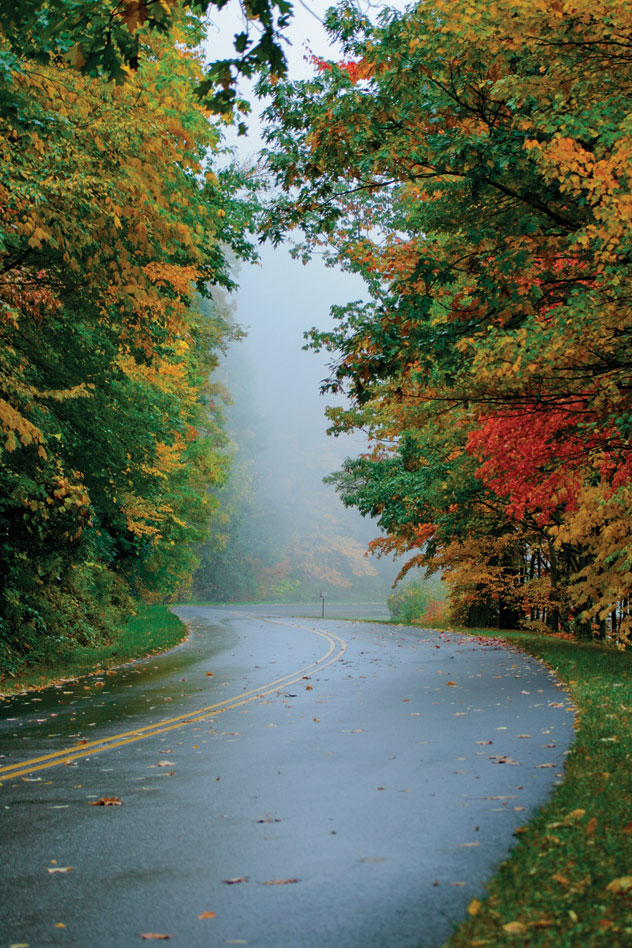
(Above): The picturesque Blue Ridge Parkway.
Our group stood on the porch of the classic early 1900 home listening to a sing-a-long from the front room. They were obviously a group of women harmonizing popular songs from the 1920s and 1930s. When they seemed finished, we knocked and were greeted by one of the singers who gave us a warm smile. “Welcome to the home of Thomas Wolfe,” she said as she led the way to the parlor.
Seated around a well-maintained upright piano were three more docents, the rest of the singing group along with the piano player. According to the first docent, the home was furnished as it was when one of America’s greatest author (1900-1938) was growing up. This was Wolfe’s home as he described it in his debut novel, Look Homeward Angel, a fictionalized chronicle of his youth and family and friends.
Located at 48 Spruce Street, the house originally known as “Old Kentucky Home,” was purchased by Wolfe‘s mother, Julia, in 1906 which she ran as a boarding house with her son. Wolfe’s father and older brother, Ben, remained at their family home on Woodfin Street. In time, Julia was to become a successful realtor and developer. Passages from his book are prominently displayed in each room describing its’ importance to its place in the book. With the references and the knowledgeable docents, Wolfe and his home became alive as we meandered from room to room.
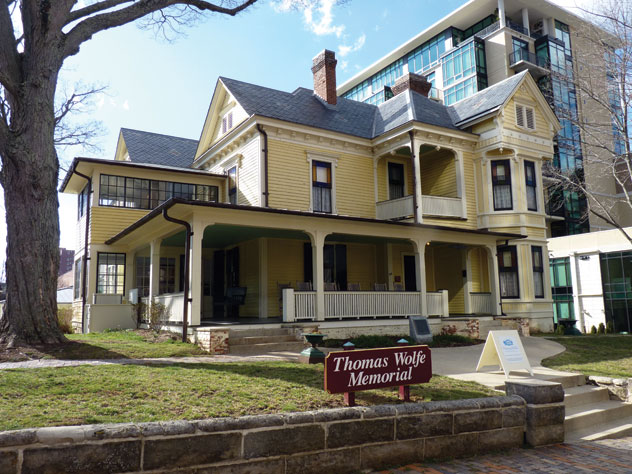
(Above): Thomas Wolfe’s home in Asheville, North Carolina. [Photo: Abe Ezekowitz | Wikimedia Commons]
In Angel, Wolfe fictionalized the Old Kentucky Home as “Dixieland” and describes it: “It was situated five minutes from the public square, on a pleasant sloping middle-class street of small homes and boarding houses. Dixieland was a big cheaply constructed frame house of eighteen or twenty drafty high-ceilinged rooms: it had a rambling, unplanned, gabular appearance, and was painted a dirty yellow. It had a pleasant green front yard not deep but wide, bordered by a row of young maples.”
What is considered literacy’s greatest site tragically burned to the ground in 1998. It took a seemingly long five years to restore Old Kentucky Home to its original presence. Thanks to the Friends of Thomas Wolfe much of the restored Memorial retains many elements and aspects of the original. Today it stands as a proud monument to one of America’s greatest authors.
Our party of four were the only visitors, so the docent corp joined us in an idle, conversational introduction to the private world of Thomas Wolfe. Our new docent friends were well-versed in this stratified literary world and this celebrated domicile they so lovingly cared for. After graduating from the University of North Carolina followed by a graduate course in Arts & Science at Harvard, Wolfe spent the rest of his short life writing and traveling throughout America and Europe.
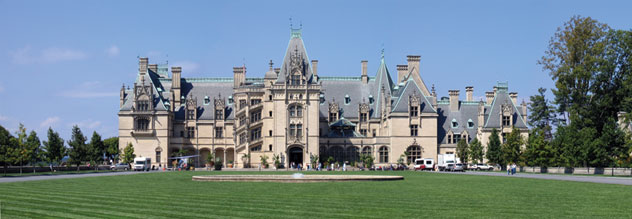
(Above): Biltmore Estate, Asheville, North Carolina. [Photo: Wikimedia Commons]
Considered one of America’s foremost writer, chronicler of American life in the early 1920s, Wolfe was lionized by his peers and contemporary American authors that followed. William Faulkner considered Wolfe the best talent of their generation; modern writers such as Ray Bradbury, Philip Roth and Jack Kerouac attested to his importance to their work. Wolfe’s life was cut short by military tuberculosis eighteen days before his 38th birthday.
Other than his host of short stories, dramatic works and novellas, Wolfe turned out only five novels: Look Homeward, Angel, You can’t go home Again, The Party at Jack’s, Of Time and the River, and O Lost. In 1926 he returned to Europe to begin work on his first novel, O Lost. But it was Angel that Eventually evolved and was submitted for publication. Although Angel became an international best seller over time, and along with Home became his most famous works, Of Time early was a more commercial success, literary critics down through the years think O Lost is Wolfe’s lasting masterpiece. The massive O Lost manuscript was eventually edited by Scribner’s legendary editor, Francis Perkins, and published in 1929.
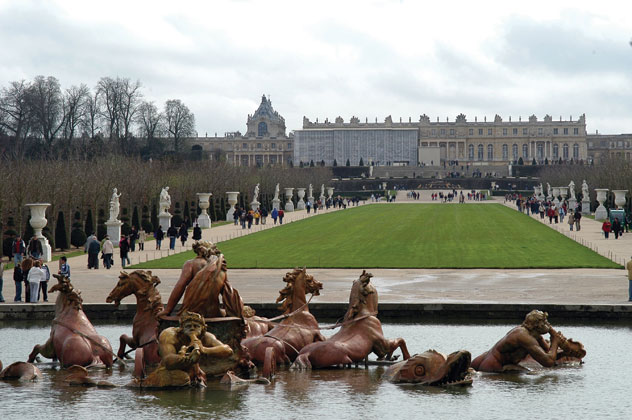
(Above): Versailles, France.
Only two of Wolfe’s novels were published during his lifetime. According to the New York Times’ obituary, “Due to his early death, Wolfe spent the shortest amount of any a major novelist during that time, with career less than half as long as Fitzgerald, Hemingway or Faulkner.”
Probably the most famous and romantized home in America is the legendary Hearst Castle At San Simeon across from the California coastal village of Cambria. Its’ cachet of castle, statuary, storied swimming pool, collection of exotic animals and famous parties and celebrity guests has been part of wealthy America’s folklore for generations.
But compare this to the not all that famous Biltmore House in Asheville, North Carolina, and the Hearst compound becomes someone’s weekend pied de terre. Even Versailles’s famed opulence might be threatened. Imagine, if you can, building a summer home on 125,000 square feet with 250 rooms. George Washington Vanderbilt began construction on this lasting monument to the “gilded age” in 1889. Built in the Châteauesque style, it was finished in 1895.
At the height of its family summer use and a wide self-supporting business venue, the Biltmore House consisted of dense forest, cattle, poultry and hog farms and a dairy, it’s own village and church. Visitors today will enjoy the vast woodlands and English Landscape for its natural beauty. At the time, Vanderbilt was deeply involved in creating the Biltmore Forest School, the first forestry education program in the U.S. In 1964 it was designated a National Historic Landmark.
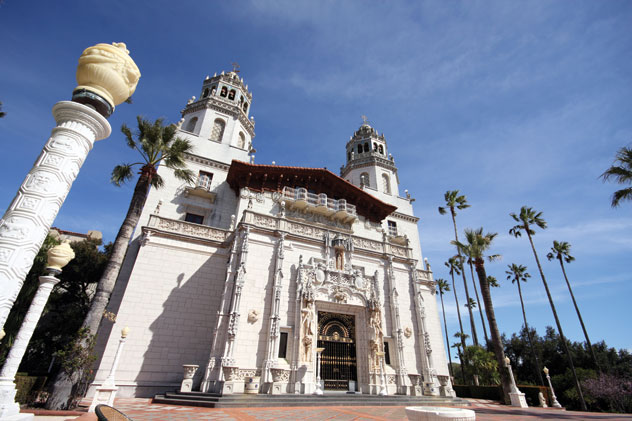
(Above): Hearst Castle, California.
Over the years much of the land was sold and today only 8,000 acres remain. The church still remains, as does the village and cattle farm; the original cattle barn has been turned into a winery. Today the Biltmore House and surrounding land contain countless sites, exhibits rooms for the visitors. The include the “If These Wall Could Talk” exhibit in the Second Floor Living Hall, restoration of the Louis XV Suite, the remodeled winery.
One of the most interest experiences is the “Butler’s Tour,” which has added Mrs. King’s bedroom. King was head of the household from 1897-1914, managing the colossal mansion while the Vanderbilts were out of the country. Collectors and art lovers hope their will be a repeat of the magnificent Vanderbilt Tiffany collection exhibition that was on display in Biltmore’s Antler Hill Village in 2011. Reputed to be worth millions, the collection consisted of 45 renowned Tiffany Lamps and three windows that were brought in for the summer show.
The Wolfe Memorial Home and the Biltmore House were an enormous main course to the real reason our party was in Asheville. We were a large party of automotive writers and photographers assembled to put the newest generation of Audi motorcars to a test on the demanding highway that winds its way through the celebrated Blue Ridge and Smoky Mountains. A dessert worthy of the Southern Hospitality, starter and main course we had feasted on earlier.
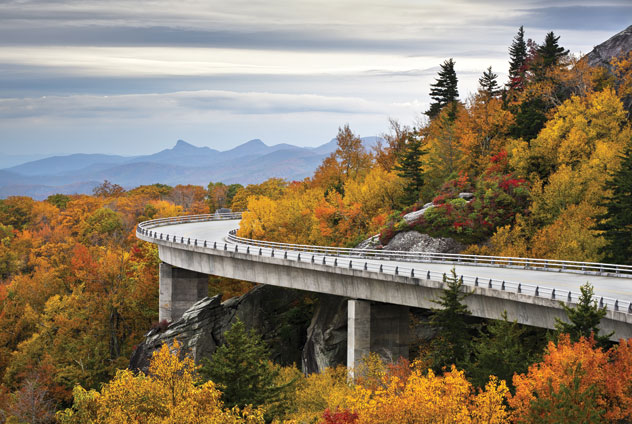
(Above): The picturesque Blue Ridge Parkway.
While Asheville may not be all that well known west of the Mississippi, The Blue Ridge and Smoky Mountains are as celebrated as California’s Highway 1 for its glorious countryside vistas and demanding driveability. It’s constant climb and sinuous architecture were an absolute fit to the family of Audis at our disposal. The Blue Ridge Parkway and its continuity of multiple mountain ranges reaches far north to the Berkshires of Massachusetts and the Green Mountains Vermont. If you’re a typical “Road Rat,” after visiting Asheville and its low-profile Thomas Wolfe Memorial and the over-arching and sybaritic pleasures of the Biltmore House, don’t miss one of America’s most celebrated vista tours through the Southeast of the U.S. on a legendary mountain highway.
|